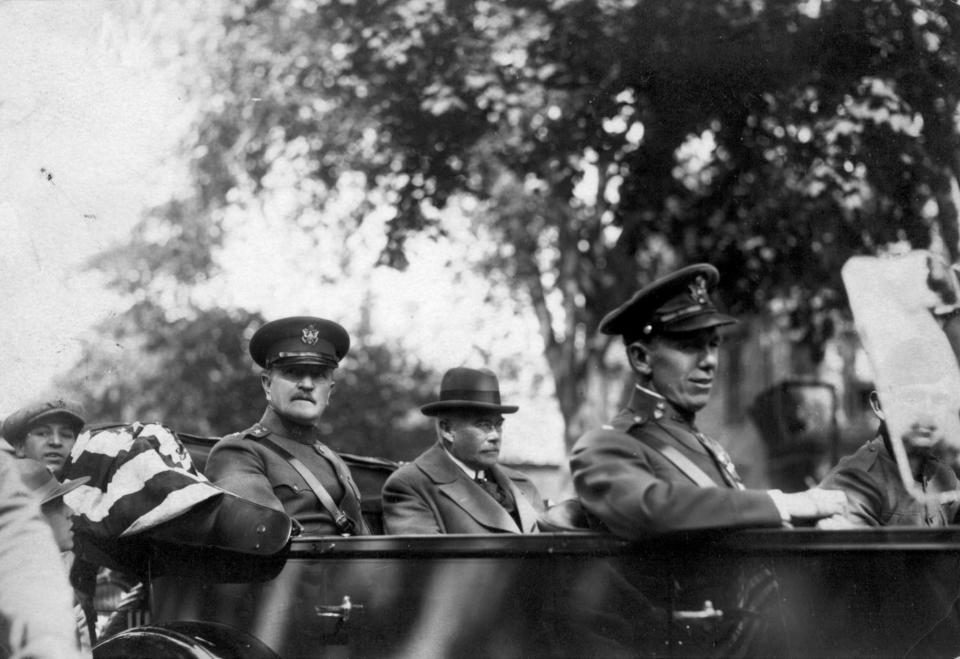Remembering the man behind Passaic's parks as the city gets ready to turn 150
One of Passaic's "greatest assets" is its "numerous acres of parkland," reads the city's own master plan. The same could have been said about Robert Dix Benson.
As Passaic prepares to mark its 150th birthday in April, we take a closer look at Benson and his contributions to the city.
Who was Robert Dix Benson?
A New York native, Benson grew up in Pennsylvania and didn't move to Passaic until the age of 27. Then a newlywed, the oil heir and businessman quickly set about integrating himself into all things Passaic.
From his first home on Aycrigg Avenue — named for U.S. Congressman John Aycrigg, the father of Passaic's first mayor Benjamin Aycrigg — he entertained members of the Passaic Club and other social groups. Later, from his stately extant manor at 66 Passaic Ave., now a funeral home, he welcomed city officials for serious discussions about the fabric of Passaic.
Passaic: City gets ready to celebrate 150th birthday. Volunteers wanted
As a result of those discussions and others, Benson remains credited by city officials as the man responsible for the preservation of most of the city's parkland. He helped put Veterans' Memorial Park, the city's largest park, on the map. So, town officials put him on the map as well, naming Benson Avenue along the 55-acre park's entrance in his honor.
Benson's early years
Born in May 1861, Benson's first few years were spent at a farm outside Syracuse while his father Byron Benson fought for the Union Army in the Civil War. Four years later, he was off to Enterprise, Pennsylvania. His father, then honorably discharged, had operated a stave mill in New York and wanted to get into the lumber business in Pennsylvania, according to St. Lawrence County (N.Y.) Historical Association records.
He bought 700 acres east of Enterprise and found himself in the middle of the nascent petroleum industry. At the time, oil was transported in whiskey barrels. The trek from the wells to the railroads was made by horse-drawn wagons. Byron Benson and his business partners instead built a pipeline. They called it the Tide Water pipeline.

Daniel Yergin, an author and vice chairman of S&P Global, referred to the innovative pipeline as a daring experiment in his 1991 book "The Prize"
"There was no precedent for the project, named the Tide Water Pipeline, and no guarantee at all that it was technically possible," he wrote.
Opened in 1879, the pipeline ran from Coryville to Williamsport. From there, railcars would bring the oil to Bayonne. The method proved a profitable way of avoiding John D. Rockefeller's Standard Oil conglomerate and providing them with the adequate competition. Rockefeller would eventually build his own pipelines, but Tide Water stuck around long enough to diversify into refining.
The company acquired the Bayonne refineries it had been delivering oil to in 1888. A massive year for Benson, then the Tide Water company's manager and director, he would attend his father's funeral that February and his own wedding that October. Both were massively attended affairs. The latter was so adorned with fashionable guests and rare flowers that the Passaic Daily News reported that it "made a scene artists would gloat upon."
The marriage to Married Harriet Granger of Park Place at St. John's Church was Benson's first true foray into Passaic society.
No longer a New Yorker
"Although a New Yorker now, Mr. Benson's home is in Titusville, Pa., but hereafter he will be counted among the citizens of Passaic," the News reported.
Benson soon took to hosting social clubs, becoming the Passaic Club president within just a few years. He was a decent golfer, having won the 1901 club tournament at Yountakah Country Club in Nutley. He was also a famed man of industry, making his way on the board of various Passaic businesses and banks. Still, he became best known for his civic involvement.
He was the school board president when the Passaic High School basketball team won its 159th straight game and failed to win its 160th. He also served at different times on the library board and city council, where he began his mission to place parks throughout Passaic. As chairman of the Public Parks Committee in 1908, he unveiled a plan to put a park in every ward to boost the town's desirability and provide breathing places and playgrounds to children in crowded districts. "We cannot be a Montclair, but we do not want to become a sordid mill town, where no one will live who can go elsewhere," Benson said.
Roughly a decade later, Benson led the charge in the city's purchase of the city's largest park: Memorial Park in the 3rd Ward. In a 16-page plan, he made the pitch to buy the old Van Wagoner house and the derelict Reformed Dutch Church Cemetery, according to records from contemporary author and historian William Winfield Scott. By July 1921, more than 1,000 bodies had been mapped, exhumed and relocated to permit the park's grand opening.
His fervor led to his integration into Passaic County's parks commission, as he was named the body's first president in 1926. The commission immediately set about hiring the nationally famed Olmsted Brothers landscape architecture firm to create a master plan for its budding park network. Benson remained on the board until his death in September 1931.
This article originally appeared on NorthJersey.com: Meet Robert Dix Benson, the man behind City of Passaic's open spaces

